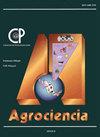IDENTIFICATION AND CHEMICAL COMPOSITION OF FORAGE RESOURCES CONSUMED BY GOATS IN THE MIXTECA REGION OF OAXACA, MEXICO
IF 0.5
4区 农林科学
Q4 AGRICULTURE, MULTIDISCIPLINARY
引用次数: 0
Abstract
The Mixteca region of Oaxaca, Mexico, is characterized by extensive grazing of various grasses, shrubs, and trees to raise goats. The objective of this study was to identify and determine the dry matter (DM), organic matter (OM), crude protein, neutral detergent fiber (NDF), and in vitro dry matter digestibility (IVDMD) of the species consumed by goats in the Mixteca region of Oaxaca. The direct observation method was used to collect forage from the species during the rainy (August-September) and dry (April-May) seasons. A botanical collection was made for later identification. The variables considered were the season (rainy, dry) and growth habit (tree, shrub, herbaceous, pod) as treatments. The chemical composition values were analyzed with a completely randomized experimental design. A total of 116 species were identified, of which 74 % were found in the rainy season and 26 % in the dry season. By growth habit, 42 % were trees, 34 % shrubs, and 24 % herbaceous. In addition, 11 % of the total species provided pods that goats consumed. The Fabaceae family was the most represented. Regarding chemical composition, the NDF content of the species was higher (p ≤ 0.05) in the rainy season. By growth habit, the highest values obtained (p ≤ 0.05) for DM were in herbaceous and pods; for OM, in pods; for NDF, in pods and trees; and for IVDMD, in trees, shrubs, and pods. The goat livestock of the Mixteca region in Oaxaca has an important ecological niche. The evaluated species maintain a variable chemical composition between the rainy and dry seasons.墨西哥瓦哈卡州mixteca地区山羊饲料资源的鉴定和化学成分分析
墨西哥瓦哈卡州的米斯特卡地区以大量放牧各种草、灌木和树木来饲养山羊为特点。本研究旨在鉴定和测定瓦哈卡州米克斯特卡地区山羊食用的山羊品种的干物质(DM)、有机物(OM)、粗蛋白质、中性洗涤纤维(NDF)和体外干物质消化率(IVDMD)。采用直接观察法在多雨季节(8 - 9月)和干旱季节(4 - 5月)采集草料。为以后的鉴定收集了植物标本。考虑的变量是季节(多雨、干燥)和生长习惯(乔木、灌木、草本、豆荚)作为处理。化学成分值分析采用完全随机实验设计。共鉴定出116种,其中在雨季发现的占74%,在旱季发现的占26%。按生长习性划分,乔木占42%,灌木占34%,草本占24%。此外,总品种中有11%提供供山羊食用的豆荚。以豆科植物最具代表性。在化学成分方面,雨季NDF含量较高(p≤0.05)。从生长习性看,DM在草本和豆荚中最高(p≤0.05);对于OM,在豆荚中;对于NDF,在豆荚和树木中;对于IVDMD,在树木、灌木和豆荚中。瓦哈卡州米斯特卡地区的山羊家畜具有重要的生态位。被评估的物种在雨季和旱季之间保持着不同的化学成分。
本文章由计算机程序翻译,如有差异,请以英文原文为准。
求助全文
约1分钟内获得全文
求助全文
来源期刊

Agrociencia
农林科学-农业综合
CiteScore
0.50
自引率
33.30%
发文量
51
审稿时长
18-36 weeks
期刊介绍:
AGROCIENCIA is a scientific journal created and sponsored by the Colegio de Postgraduados. Its main objective is the publication and diffusion of agricultural, animal and forestry sciences research results from mexican and foreign scientists. All contributions are peer reviewed. Starting in the year 2000, AGROCIENCIA became a bimonthly and fully bilingual journal (Spanish and English versions in the same issue). Since 2007 appears every month and a half (eight issues per year). In addition to the printed issues, the full content is available in electronic format.
 求助内容:
求助内容: 应助结果提醒方式:
应助结果提醒方式:


